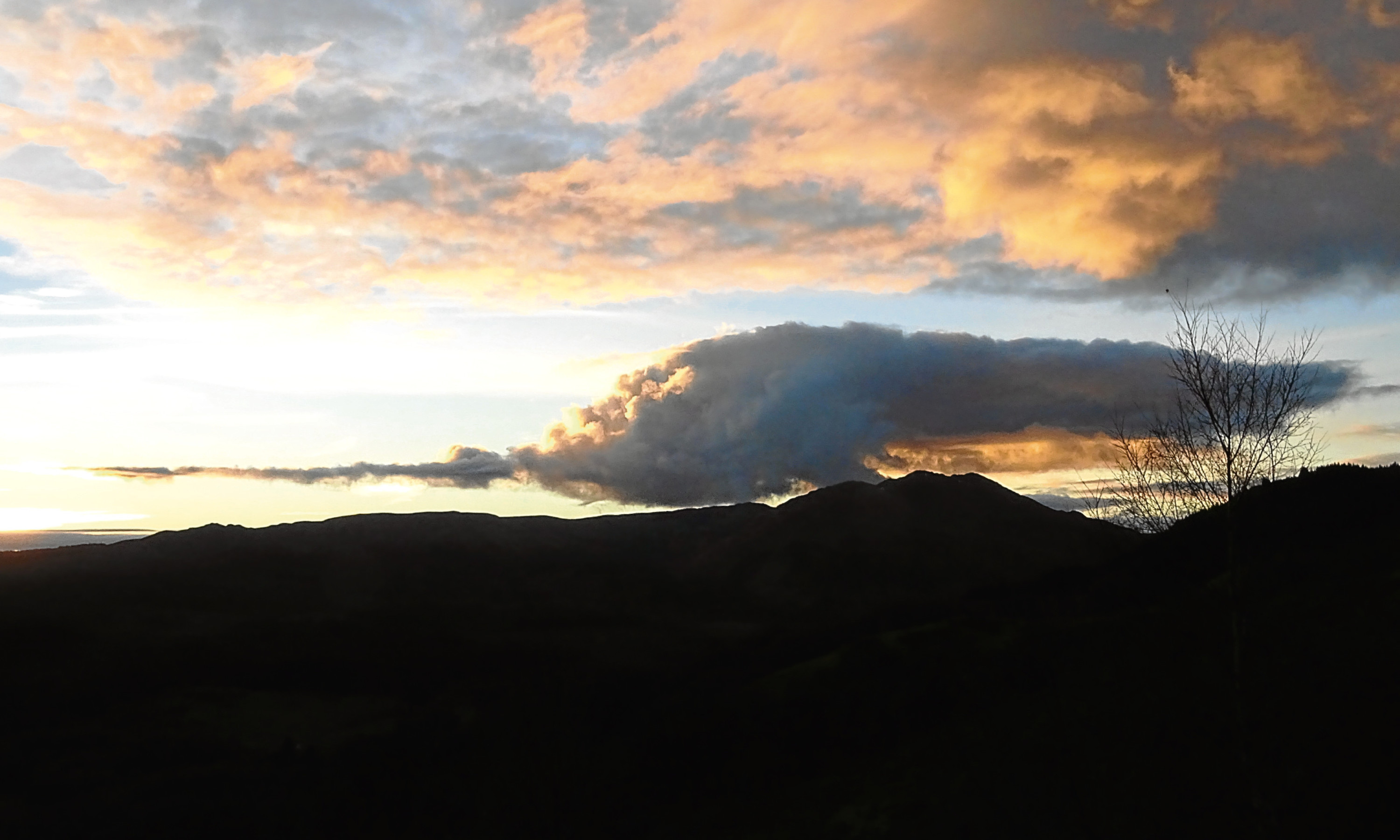What do you think about omens? Perhaps you don’t think about them at all, of course, in which case, what follows may leave you scratching your head.
There again, it may make you start thinking about omens.
I’m still not sure what I think about them, even after the appearance of something weird in my portion of the sky, so weird that I took its photograph; and then there was the weird coincidence of what has followed since.
As I mentioned hereabouts last week, I am writing a book about winter and given the nature of the winter which ends today (according to the Met Office at least which would have you believe that tomorrow is the first day of meteorological spring), one of the book’s recurring themes is global warming.
I know from The Courier letters pages that Courier Country still harbours its fair share of global warming sceptics, although even they probably stop some way short of President Trump’s view that it is a conspiracy invented by China.
But when you have been writing about nature for a living for 30 years and studying it for rather longer, the perspective is a unique one.
If you weigh the verdict of those sources you trust among the world’s biologists and nature writers of the last 200 years, say, then set that alongside what you have seen and questioned for yourself, then there is only one reasonable conclusion.
It is that global warming is no longer a disaster waiting to happen – it has begun, it is already happening and it is travelling with terrifying speed towards the point beyond which it will not be reversible.
So what, you may ask, has this got to do with omens?
I was out in Glen Finglas in the Trossachs not long ago, on a quite beautiful day which autumn had stolen back from early winter.
Wandering back down the hill at sunset, an extraordinary looking cloud appeared over Ben Venue. It looked so remarkably like a narwhal that I took its photograph.
If you have never seen a picture of a narwhal, it is a whale of the Arctic Ocean and most narwhals have a straight, slender and tapering tusk which projects forward from its head and for anything up to 10ft.
The narwhal is an Arctic specialist. Unlike many whale species, it doesn’t migrate but remains in Arctic waters all year, where it can live under the sea ice.
At the time the narwhal-shaped cloud appeared in the Trossachs sky and quite unknown to me then, narwhal on the north coast of Canada’s Baffin Island were having a problem.
That problem was killer whales but the reason they have a problem with killer whales at all is global warming.
All this has just come to light because of the publication of a study by the Canadian Department of Fisheries and Oceans.
The presence of killer whales, says the study, is “intimidating the narwhal into drastically altered behaviour. It’s another symptom of how climate change is remaking the delicate northern environment”.
Five thousand narwhal summer in Admiralty Inlet, enjoying the protection of sea ice. Crucially, killer whales don’t like sea ice, so their presence in these, the narwhal’s calving grounds, was always limited.
But the decline of the ice means the killer whales now arrive in greater numbers, arrive earlier and stay longer.
Admiralty Inlet is huge – 300km (186 miles) long and 50 (31 miles) wide. Routinely, the narwhal hunted between four and 10km (six miles) offshore. But now, whenever the killers are present anywhere at all in the inlet, the narwhal “cower” within 500 metres (1,640ft) of the shore.
One of the co-authors of the report, Steve Ferguson, observed: “I think the narwhal are scared to death.”
As a result, they are being driven out of what were their richest and safest hunting grounds.
Steve offered this chilling thought: “Most traditional science views changes from the bottom up – the food supply changes and it ripples its way up the food chain.
“A few of us believe the changes can happen from the top down and be just as significant.”
The melting of sea ice in the polar regions and their very visible consequences make headlines all round the world.
President Trump’s environmental policies and appointments effectively mean the world’s most powerful nation with the heftiest global warming footprint has just made a pact with the devil.
As in nature, so in politics: changes can happen from the top down and be just as significant.
Meanwhile, a Scottish nature writer observing in some detail the nature of this winter of 2016-17 in his own part of the world and finding it bestrewn with admittedly smaller symptoms of the phenomenon that is global warming, can perhaps be forgiven for wondering what nature was up to when it painted a narwhal on Trossachs skyline.
